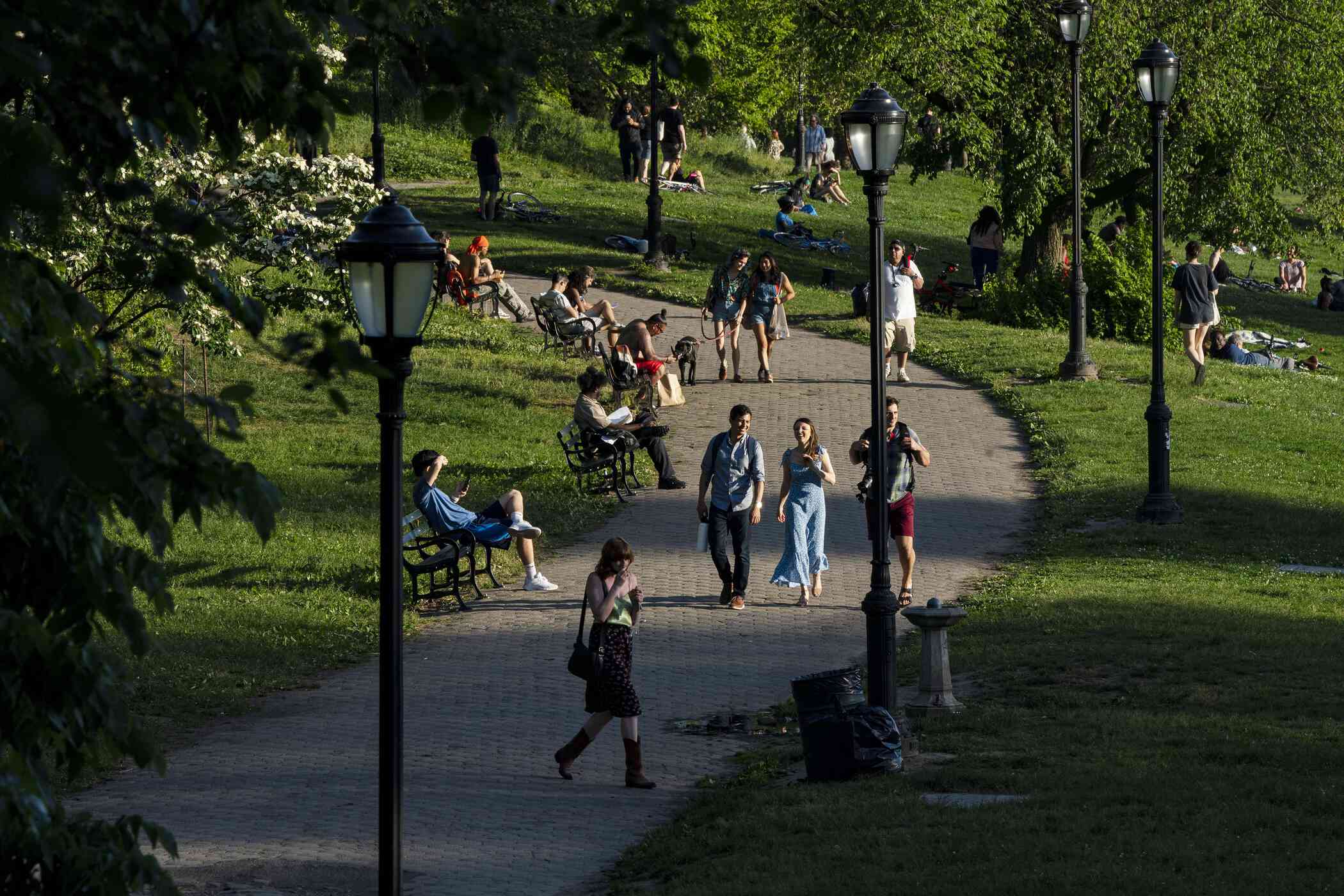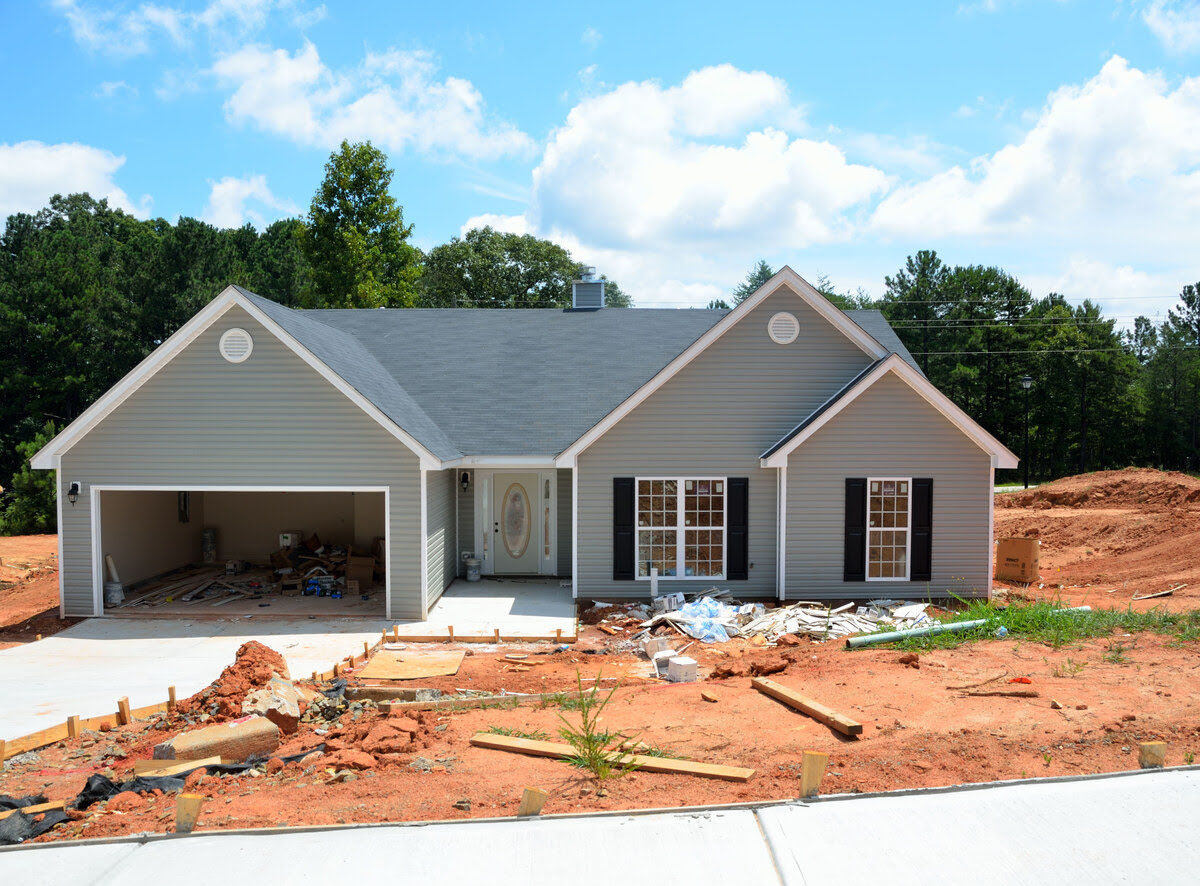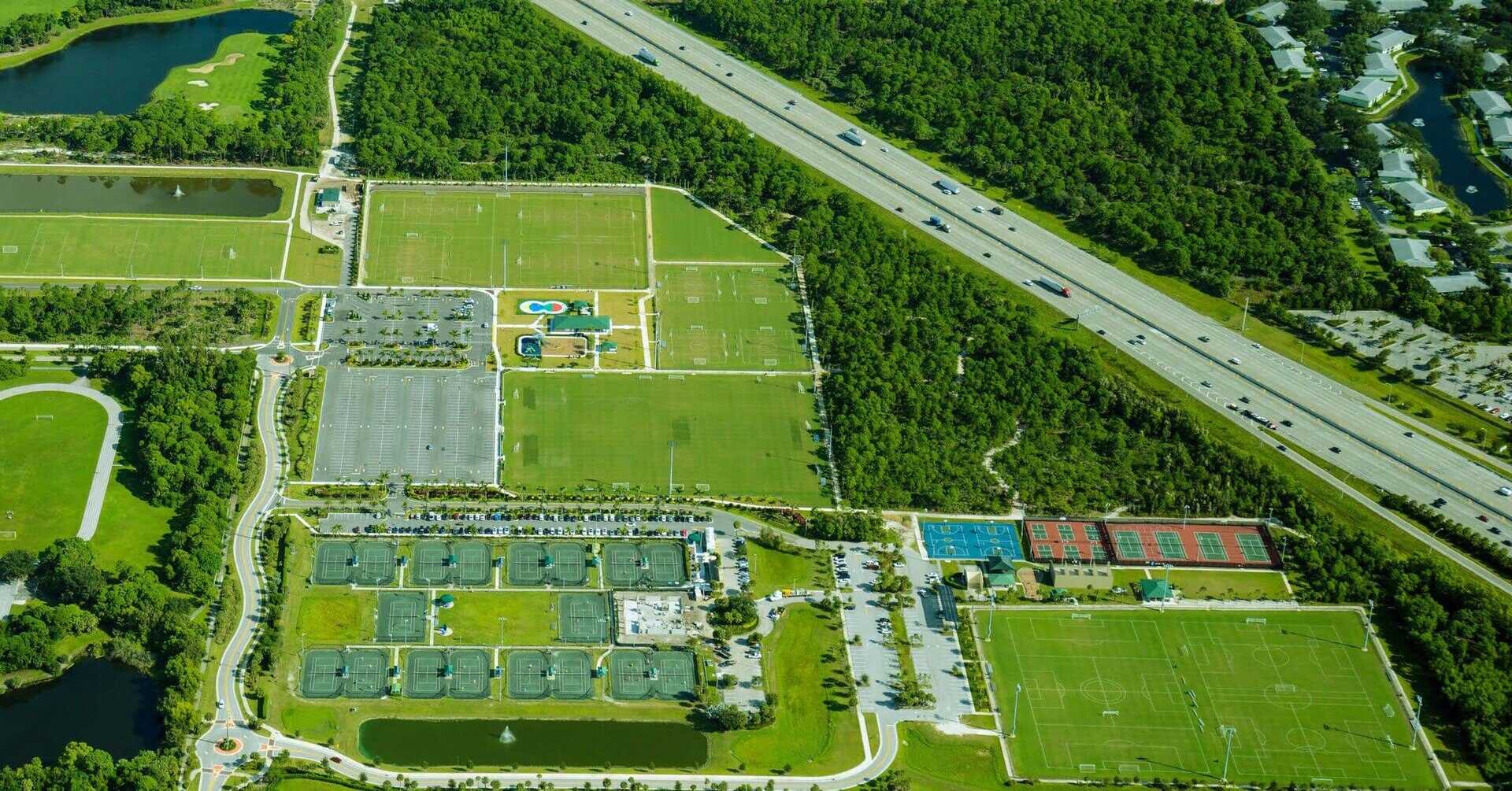Home>Garden Essentials>How Have Countries Addressed The Problem Of A Lack Of Green Space


Garden Essentials
How Have Countries Addressed The Problem Of A Lack Of Green Space
Modified: March 7, 2024
Discover how countries have tackled the issue of limited green space through innovative garden initiatives and urban planning strategies.
(Many of the links in this article redirect to a specific reviewed product. Your purchase of these products through affiliate links helps to generate commission for Storables.com, at no extra cost. Learn more)
Introduction
Welcome to the green world! In this article, we will explore how different countries have addressed the problem of a lack of green space. Green spaces, such as parks, gardens, and urban forests, play a crucial role in enhancing the quality of life for people living in cities and urban areas. They provide a sanctuary for relaxation, physical activity, and connecting with nature.
With the rise of urbanization and the increasing population density in cities, the availability of green spaces has become an essential consideration in urban planning. Sadly, many cities around the world are facing a lack of green space, which can have detrimental effects on the physical and mental well-being of their residents. However, countries are stepping up to address this issue by implementing various approaches and initiatives.
In this article, we will delve into the importance of green space, explore the problem of a lack of green space, and delve into the approaches that countries have adopted to tackle this issue. We will also discuss specific solutions implemented by countries such as the United Kingdom, Singapore, Canada, Australia, and Brazil. Finally, we will examine the benefits of increasing green space and the challenges and limitations faced in the process.
So, let’s embark on this green journey and discover how countries have paved the way for a greener and healthier future.
Key Takeaways:
- Green spaces in cities, like parks and gardens, are crucial for our health and well-being. Countries are taking steps to create more green areas to improve air quality, promote physical activity, and reduce stress.
- Challenges like limited space and financial constraints exist, but the benefits of green spaces outweigh the limitations. Collaborative efforts are needed to overcome challenges and create vibrant, resilient, and equitable green spaces.
Importance of Green Space
Green spaces hold immense importance in urban environments and contribute to the overall well-being of individuals and communities. They serve as vital components of a healthy and sustainable city. Here are some key reasons why green spaces are essential:
- Environmental Benefits: Green spaces provide numerous environmental benefits. They help to mitigate the urban heat island effect, reduce air pollution, and combat climate change by absorbing carbon dioxide and releasing oxygen. Trees and vegetation also play a crucial role in preserving biodiversity and providing habitat for wildlife.
- Physical Health: Access to green spaces encourages physical activity and promotes a healthier lifestyle. Parks and gardens offer opportunities for recreational activities such as walking, jogging, cycling, and playing sports. Regular physical exercise in green spaces can help reduce the risk of obesity, cardiovascular diseases, and other lifestyle-related illnesses.
- Mental Health: Green spaces have a positive impact on mental health and well-being. Being in nature and surrounded by greenery can reduce stress, anxiety, and depression. Spending time in green spaces helps to rejuvenate the mind, improve mood, and boost cognitive functions. It provides a sense of tranquility and promotes relaxation.
- Social Cohesion: Green spaces act as communal areas that bring people together. They create opportunities for social interaction, community bonding, and the development of a sense of belonging. Parks serve as gathering places for recreational activities, events, and celebrations, fostering a sense of community and unity among residents.
Furthermore, green spaces contribute to the aesthetic value of a city, making it more visually pleasing and appealing. They enhance the urban landscape, creating a balance between concrete structures and natural elements. The presence of green spaces also increases property values and attracts visitors and tourists, benefiting local economies.
Given the multitude of benefits that green spaces offer, it is crucial to address the problem of a lack of green space in cities and ensure the availability of these vital areas for the well-being of present and future generations.
The Problem of a Lack of Green Space
In many cities around the world, the lack of green space has become a pressing issue. Rapid urbanization, population growth, and the expansion of concrete jungles have resulted in a significant reduction in available green areas. This lack of green space poses several challenges and negative consequences:
- Health Impacts: The absence of green spaces denies urban dwellers the opportunity to connect with nature and engage in outdoor activities. This lack of exposure to nature has been linked to higher levels of stress, anxiety, and mental health disorders. Without access to green spaces, individuals may experience a decrease in overall well-being and physical health.
- Environmental Consequences: A lack of green space has adverse effects on the environment. With limited vegetation cover, cities become vulnerable to the urban heat island effect, where temperatures rise due to the abundance of concrete and asphalt. This leads to increased energy consumption, higher carbon emissions, and decreased air quality.
- Social Inequity: The absence of green spaces disproportionately affects disadvantaged communities. These areas often lack access to quality green spaces, denying residents the physical, mental, and social benefits they provide. The lack of green spaces further widens the gap between socio-economic groups, exacerbating existing social and health inequalities.
- Loss of Biodiversity: A lack of green spaces can lead to a loss of biodiversity. Without sufficient natural habitats and vegetation, the diversity of wildlife and plant species diminishes. This has cascading effects on the overall ecosystem and disrupts crucial ecological processes.
- Urban Heat Island Effect: Concrete-dominated cities absorb and retain heat, resulting in higher temperatures compared to surrounding rural areas. The lack of green spaces exacerbates this urban heat island effect, as there is limited natural cooling through shade and evapotranspiration. The high temperatures contribute to discomfort, heat-related illnesses, and increased energy demands for cooling buildings.
To address these problems, cities and countries have begun to prioritize the creation and preservation of green spaces as an integral part of urban planning and development. Innovative approaches and sustainable strategies have been adopted to increase the availability and accessibility of green spaces, ensuring a greener and healthier urban environment for all.
In the next section, we will explore some of these approaches and country-specific solutions to the problem of a lack of green space.
Approaches to Addressing the Lack of Green Space
The problem of a lack of green space in cities has prompted governments and urban planners to implement various approaches and strategies to increase the availability and accessibility of green areas. Here are some commonly adopted approaches:
- Urban Greening: Many cities are incorporating urban greening initiatives into their urban planning processes. This includes the retrofitting of existing infrastructure with green features, such as green roofs, vertical gardens, and living walls. These measures help to maximize the use of limited space and introduce greenery into urban environments.
- Brownfield and Vacant Lot Conversion: Converting underutilized and abandoned properties, such as brownfields and vacant lots, into green spaces is another effective approach. This not only addresses the lack of green space but also revitalizes neglected areas and improves the overall aesthetics of the city. Community gardens, urban farms, and pocket parks are examples of such conversions.
- Park and Green Corridor Expansion: Expanding existing parks and creating green corridors, such as pathways and cycling networks, helps connect fragmented green spaces within a city. These corridors provide safe and accessible routes for pedestrians and cyclists while promoting biodiversity and ecological connectivity.
- Vertical and Rooftop Gardens: Utilizing vertical spaces and rooftops for gardening and greenery is a popular approach in densely populated cities. Vertical gardens and rooftop gardens not only add aesthetic value but also help improve air quality, provide insulation, and promote urban agriculture.
- Permeable Surfaces: Incorporating permeable surfaces, such as grass pavers and porous pavements, allows rainwater to infiltrate the ground rather than running off into storm drains. This helps recharge groundwater, reduce flooding, and promote the growth of vegetation in urban areas.
- Public-Private Partnerships: Collaborations between the public and private sectors can significantly contribute to increasing green spaces. Governments can partner with developers and businesses to incorporate green spaces into new construction projects and urban developments. This encourages the inclusion of green areas in private property designs, making green spaces more accessible to the public.
These approaches help tackle the lack of green space issue by optimizing existing spaces, transforming underutilized areas, and integrating green elements into the urban fabric. By adopting these strategies, cities can create a healthier and more sustainable environment for their residents.
In the following sections, we will delve into specific solutions implemented by countries such as the United Kingdom, Singapore, Canada, Australia, and Brazil, to address the problem of a lack of green space.
Country-Specific Solutions
Various countries have implemented unique and innovative solutions to address the problem of a lack of green space. Let’s explore some country-specific solutions:
Read more: Which London Skyscrapers Have Green Space
United Kingdom:
The United Kingdom has prioritized urban greening through initiatives like the “Green Infrastructure Framework.” This framework emphasizes the integration of green spaces into planning and development processes. The country has also focused on creating community gardens, converting abandoned spaces into urban farms, and establishing “pocket parks” in densely populated areas, allowing residents to enjoy greenery even in urban environments.
Singapore:
Singapore, known as the “Garden City,” has made remarkable strides in creating green spaces within its urban landscape. The city-state has implemented a comprehensive approach, including rooftop gardens, vertical greening, and the development of extensive park networks such as the iconic Gardens by the Bay. Singapore’s commitment to green space is also evident in its vision to transform every neighborhood into a “City in a Garden,” ensuring that every resident is within a 10-minute walk to a park.
Canada:
Canada has implemented various strategies to increase green spaces, focusing on both urban and rural areas. Cities like Vancouver have implemented policies that prioritize parks and green corridors, ensuring that every resident has access to natural spaces. The country has also promoted community involvement in urban greening projects, encouraging citizens to participate in the creation and maintenance of green spaces through initiatives like community gardens and tree planting programs.
Australia:
Australia has recognized the importance of green spaces in combating its hot and arid climate. The country has implemented strategies such as the “10-Minute City” concept, which aims to create neighborhoods where residents can access essential services, including green spaces, within a 10-minute walk. Australia also values its natural landscapes and has established national parks and protected areas to preserve its unique biodiversity and provide recreational opportunities.
Brazil:
Brazil has implemented innovative approaches to address the lack of green space, particularly in its urban areas. Cities like Curitiba have pioneered the concept of “green corridors,” connecting existing parks and green spaces through linear parks and pedestrian-friendly routes. Brazil has also explored vertical greening solutions, converting walls and facades into lush gardens, improving air quality and temperature regulation within urban environments.
By implementing these country-specific solutions, these nations have taken significant steps in addressing the lack of green space, creating healthier and more sustainable urban environments for their residents.
Case Study: United Kingdom
The United Kingdom has been at the forefront of addressing the lack of green space in its urban areas. Through various initiatives and policies, the UK has made significant progress in creating and preserving green spaces for the well-being of its residents. Let’s take a closer look at the case study of the United Kingdom:
Urban Greening Initiatives: The UK has recognized the importance of incorporating green spaces into urban environments. The “Green Infrastructure Framework” is an initiative that emphasizes the integration of green spaces into planning and development processes. It encourages local authorities to consider the inclusion of green spaces, such as parks, gardens, and green corridors, in their urban planning policies. This approach aims to maximize the use of available space to create green areas that enhance the quality of life in cities.
Community Gardens and Urban Farms: The UK has embraced the concept of community engagement in greening initiatives. Allotment gardens, community gardens, and urban farms have become increasingly common across the country. These projects not only provide residents with opportunities to grow their own food but also contribute to the creation of green spaces within urban areas. They foster a sense of community, promote healthy eating habits, and offer educational opportunities for individuals of all ages.
“Pocket Parks” and Brownfield Conversion: In densely populated areas where green space is limited, the UK has introduced the concept of “pocket parks.” These are small, accessible green spaces integrated into urban landscapes. They take advantage of underutilized areas, such as vacant lots, transforming them into vibrant and inviting green pockets for the community to enjoy. Additionally, brownfield sites, which were once used for industrial purposes, are being repurposed and converted into green spaces, revitalizing neglected areas and bringing nature back into the urban fabric.
Emphasis on Biodiversity: The UK recognizes the importance of preserving biodiversity within its green spaces. Many parks and gardens are designed to create habitats and support wildlife. Native plant species are prioritized to promote biodiversity and provide suitable environments for local fauna. This focus on biodiversity not only enhances the ecological value of green spaces but also provides opportunities for environmental education and awareness.
The United Kingdom’s commitment to addressing the lack of green space has resulted in the creation of vibrant and accessible urban green areas. By integrating green spaces into urban planning, encouraging community involvement, and prioritizing biodiversity, the UK is setting an example for other countries in the quest for greener and healthier cities.
Case Study: Singapore
Singapore, often referred to as the “Garden City,” has implemented remarkable solutions to address the lack of green space in its densely populated urban environment. Through its proactive and innovative approaches, Singapore has transformed itself into a green oasis. Let’s delve into the case study of Singapore:
Urban Planning and Green Infrastructure: Singapore has integrated green spaces into its urban planning strategies. The city-state has set aside land for parks, nature reserves, and recreational areas. The government’s commitment to green infrastructure is evident through initiatives like the “Park Connector Network,” a comprehensive network of interconnected parks and green corridors that provides accessible and seamless connections for pedestrians and cyclists across the island.
Rooftop Gardens and Vertical Greening: Singapore takes advantage of vertical spaces by implementing rooftop gardens and vertical greenery. The iconic Gardens by the Bay, with its towering Supertrees and expansive conservatories, is a testament to Singapore’s dedication to vertical greening. These vertical green spaces not only contribute to the city’s aesthetic appeal but also provide benefits like improved air quality, reduced urban heat island effect, and conservation of biodiversity.
Accessibility and Proximity: Singapore’s vision of a “City in a Garden” aims to ensure that everyone is within a 10-minute walk of a park. This focus on accessibility and proximity to green spaces ensures that residents can easily access nature and reap its benefits. With numerous parks, nature reserves, and community gardens distributed across the city-state, Singapore has created an environment where nature is readily accessible to its residents.
Community Engagement: Singapore places a strong emphasis on community involvement in greening efforts. The “Community in Bloom” program encourages residents to be actively involved in gardening and community greening projects. Community gardens and allotment gardens are prevalent, providing residents with opportunities to grow their own food and connect with nature. This community engagement fosters a sense of ownership and pride in the green spaces, further enhancing their value within the community.
Sustainable Development: Singapore aims to achieve sustainable development by incorporating green spaces into its urban fabric. The city-state practices careful urban planning and ensures that new developments integrate green spaces. The government requires developers to dedicate a certain percentage of land to green spaces, ensuring that even as the city grows and develops, the availability of green areas is not compromised.
Singapore’s commitment to creating a green and sustainable environment has earned it international recognition. By integrating green spaces into urban planning, embracing rooftop gardens and vertical greening, ensuring accessibility to parks, promoting community engagement, and prioritizing sustainable development, Singapore has demonstrated a successful model for addressing the lack of green space in urban areas.
Case Study: Canada
Canada, known for its vast natural landscapes, has implemented various strategies to address the lack of green space in its urban areas. With a focus on both urban and rural environments, Canada is committed to providing its residents with accessible and diverse green spaces. Let’s explore the case study of Canada:
Priority on Parks and Green Corridors: Canadian cities prioritize the development and expansion of parks and green corridors. Cities like Vancouver have implemented policies that ensure the inclusion of green spaces in urban planning. The emphasis on green corridors aims to connect fragmented green areas, creating a network of interconnected parks and pathways. These green corridors improve access to nature and promote active lifestyles.
Community Engagement and Urban Farming: Canada values community involvement in green space initiatives. The country promotes community gardens and urban farming projects that bring residents together to cultivate their own food and connect with nature. These projects not only increase green spaces but also foster community engagement, promote healthy eating practices, and provide educational opportunities.
Preservation of Natural Landscapes: Canada takes pride in its natural landscapes, and the preservation of these areas is a fundamental aspect of increasing green space. The country has established numerous national parks, protected areas, and greenbelts, ensuring the conservation of pristine natural habitats. These protected areas not only offer opportunities for outdoor recreation but also contribute to biodiversity conservation and ecological sustainability.
Public-Private Partnerships: Canada recognizes the importance of collaboration between the public and private sectors in creating green spaces. Governments partner with developers and businesses to ensure that new construction projects prioritize the inclusion of green spaces. This collaboration helps to integrate green areas into private properties and new developments, creating a more sustainable and greener urban environment.
Tree Planting and Canopy Cover: Canada is committed to increasing its tree canopy cover in urban areas. Tree planting initiatives are widespread, particularly in cities where efforts are made to ensure that every resident has access to tree-lined streets and shaded public spaces. Increasing tree canopy cover not only provides shade but also contributes to cooling urban areas, improving air quality, and enhancing the overall aesthetics of the city.
Canada’s approach to addressing the lack of green space prioritizes the development and preservation of parks, active community engagement, the integration of green spaces into urban planning, and the conservation of natural landscapes. By embracing these strategies, Canada is working towards creating greener and more sustainable urban environments for its residents.
Read more: How To Freeze Green Beans From The Garden
Case Study: Australia
Australia, with its diverse landscapes and unique flora and fauna, has implemented various strategies to address the lack of green space in its urban areas. The country recognizes the importance of green spaces in promoting the health and well-being of its residents. Let’s explore the case study of Australia:
10-Minute City Concept: Australia has embraced the concept of the “10-Minute City,” where residents have access to essential services, including green spaces, within a 10-minute walk. This approach aims to create neighborhoods that are designed for walkability, ensuring that parks and green areas are easily accessible to the community. The focus on proximity and accessibility fosters a stronger connection between residents and nature.
National Parks and Protected Areas: Australia places tremendous value on its natural landscapes and biodiversity. The country has established numerous national parks, conservation areas, and protected lands to preserve its unique ecosystems. These areas not only provide opportunities for outdoor recreation but also promote conservation efforts, protect native flora and fauna, and offer educational experiences for locals and tourists.
Urban Forest Strategies: Australia has developed urban forest strategies aimed at increasing tree canopy cover in urban areas. Programs like “Million Trees” initiatives encourage the planting of trees, not only in public spaces but also in private properties. By increasing the presence of trees, Australia improves air quality, mitigates the urban heat island effect, and enhances the overall aesthetic value of cities and towns.
Green Infrastructure and Corridors: Australian cities prioritize the creation of green infrastructure and corridors. These networks of green spaces, such as parks, gardens, and natural corridors, connect fragmented green areas and enable wildlife movement. Green corridors provide residents with opportunities for recreational activities and promote biodiversity conservation within urban landscapes.
Community Involvement: Australia values community participation in greening initiatives. Community gardens, rooftop gardens, and urban agriculture projects are prevalent across the country. These projects not only contribute to the creation of green spaces but also encourage community engagement, promote sustainable food practices, and foster a sense of ownership and pride within the community.
Australia’s commitment to increasing green spaces through the 10-Minute City concept, the preservation of national parks, urban forest strategies, the development of green infrastructure, and community involvement showcases its dedication to creating healthier, more sustainable, and nature-connected urban environments.
When addressing the lack of green space, countries have implemented policies such as creating urban parks, rooftop gardens, and community gardens to increase access to nature within cities.
Case Study: Brazil
Brazil, renowned for its rich biodiversity and vast natural landscapes, has implemented innovative solutions to address the lack of green space in its urban areas. The country recognizes the importance of green spaces in promoting the well-being of its residents and preserving its unique ecosystem. Let’s delve into the case study of Brazil:
Green Corridors and Linear Parks: Brazil has pioneered the concept of “green corridors” that connect existing parks and green spaces. These corridors, often in the form of linear parks and pedestrian-friendly routes, encourage the movement of people and wildlife through green areas. By integrating green corridors into urban landscapes, Brazil promotes biodiversity conservation, enhances connectivity, and provides residents with access to nature within urban environments.
Vertical Greening: Brazil explores innovative solutions like vertical greening to increase green spaces within densely populated urban areas. Walls and facades are transformed into lush gardens, improving air quality, regulating temperature, and adding visual appeal to urban spaces. These vertical green spaces not only beautify the city but also provide habitats for birds and other small creatures, contributing to urban biodiversity.
Community Gardens and Agroforestry: Brazil encourages community engagement in greening efforts through the establishment of community gardens and agroforestry projects. These initiatives empower residents to actively participate in the cultivation of food and the creation of green spaces. Community gardens not only provide fresh produce but also serve as gathering places for social interaction, knowledge sharing, and environmental education.
Public Parks and Preservation: Brazil places significant importance on public parks as spaces for recreation and nature appreciation. The country has established numerous public parks, ranging from small neighborhood parks to expansive urban parks. These green spaces provide opportunities for physical activity, relaxation, and connection with nature. Brazil also emphasizes the preservation of existing natural areas and habitats to safeguard its unique biodiversity.
Sustainable Development and Reforestation: Brazil recognizes the importance of green spaces in sustainable development. The country has implemented reforestation initiatives to restore degraded areas and increase green cover. The reforestation efforts not only enhance the aesthetic value of the landscape but also contribute to carbon sequestration, soil protection, and the conservation of water resources.
Through the creation of green corridors, vertical greening, community engagement, the establishment of public parks, and sustainable development practices, Brazil exemplifies its commitment to addressing the lack of green space. By integrating nature into urban areas, Brazil aims to create healthier and more sustainable cities that prioritize the well-being of its residents and the preservation of its natural heritage.
Benefits and Impact of Increasing Green Space
Increasing green space in urban areas has a multitude of benefits and positive impacts on both individuals and communities. Let’s explore some of the significant advantages:
- Improved Physical and Mental Health: Access to green spaces encourages physical activity, promoting better physical health. Engaging in outdoor activities such as walking, jogging, or gardening helps reduce the risk of chronic illnesses like obesity, cardiovascular diseases, and diabetes. Furthermore, spending time in green environments has positive effects on mental health, reducing stress, anxiety, and depression.
- Enhanced Air Quality and Reduced Pollution: Green spaces play a crucial role in mitigating air pollution. Trees and plants help filter harmful pollutants and absorb carbon dioxide, reducing the impact of greenhouse gases. Increasing the number of trees and vegetation in urban areas improves air quality, making the environment healthier for residents.
- Temperature Regulation and Urban Cooling: Green spaces contribute to the regulation of temperatures in urban areas. Trees provide shade, reducing the heat island effect caused by extensive concrete and asphalt surfaces. The evapotranspiration process in plants also cools the surrounding air, creating a more comfortable microclimate.
- Promotion of Biodiversity and Ecological Balance: Green spaces provide habitats for a wide variety of flora and fauna, supporting biodiversity. Parks and gardens act as stepping stones for wildlife movement, allowing for gene flow and preserving ecological balance. By increasing green spaces, we create opportunities for nesting, foraging, and breeding for various species.
- Social Cohesion and Community Engagement: Green spaces act as gathering places, promoting social interaction and community engagement. They provide areas for recreational activities, cultural events, and celebrations, fostering a sense of community and unity among residents. Green spaces offer opportunities for people from diverse backgrounds to come together and connect with nature.
- Enhanced Aesthetics and Property Value: The presence of green spaces in urban environments enhances the overall aesthetics of the city. Streets lined with trees, well-maintained parks, and vibrant gardens create visually pleasing landscapes. Additionally, green spaces have a positive impact on property values, making neighborhoods more desirable and attracting potential residents and businesses.
The impact of increasing green space extends beyond the immediate benefits to individuals. It contributes to the overall livability and sustainability of cities, improving the quality of life for residents, and making urban environments healthier and more resilient.
By recognizing the numerous advantages of green spaces and working towards increasing their availability and accessibility, we can create greener, healthier, and more sustainable cities for present and future generations.
Challenges and Limitations
Although increasing green space in urban areas has numerous benefits, there are also challenges and limitations that need to be considered. Let’s explore some of these challenges:
- Limited Space: Urban areas often have limited space for creating new green spaces. Expanding existing parks or developing new ones can be challenging due to the availability of suitable land and the high cost of land acquisition in densely populated areas.
- Financial Constraints: Establishing and maintaining green spaces requires financial resources. Investment in infrastructure, landscaping, maintenance, and management can be costly, and securing necessary funding can be a challenge for municipalities and governments, especially in economically disadvantaged areas.
- Engaging Local Communities: Engaging and involving local communities in the process of increasing green space can be challenging. It requires effective communication, community participation, and addressing the diverse needs and preferences of the residents. Overcoming resistance or apathy from the community can be a hurdle in implementing green space initiatives.
- Maintenance and Sustainability: Green spaces require regular maintenance, including watering, pruning, and pest control, to ensure their sustainability and attractiveness. Adequate staffing, expertise, and resources are needed for ongoing maintenance, which can pose challenges for municipalities with limited budgets or a lack of skilled personnel.
- Equitable Distribution: Ensuring equitable distribution of green spaces is essential to address social and environmental justice. Disadvantaged neighborhoods and marginalized communities often have limited access to green spaces, exacerbating existing inequalities. Efforts should be made to prioritize the creation of green spaces in underserved areas to promote social equity.
- Climate Change and Resilience: Climate change impacts such as extreme weather events, heatwaves, and droughts pose challenges to the sustainability of green spaces. Ensuring the resilience of green spaces to climate change requires thoughtful design, appropriate plant selection, and irrigation systems that minimize water usage.
Addressing these challenges requires collaborative efforts among various stakeholders, including governments, urban planners, community organizations, and residents. Creative solutions, innovative financing models, and adaptive management strategies can help overcome the limitations and ensure the successful implementation and long-term sustainability of green space initiatives.
Despite the challenges, the benefits of increasing green space outweigh the limitations. It is essential to recognize and address these challenges to create vibrant, resilient, and equitable green spaces that contribute to healthier and more livable urban environments.
Read more: How To Change A Printer Ip Address
Conclusion
The lack of green space in urban areas is a pressing issue that affects the well-being and livability of cities. However, countries worldwide are implementing various strategies to address this problem and create healthier and more sustainable urban environments.
By recognizing the importance of green spaces, countries like the United Kingdom, Singapore, Canada, Australia, and Brazil have taken significant steps to increase the availability and accessibility of green areas. These countries have implemented approaches such as urban greening initiatives, rooftop gardens, community engagement programs, and the preservation of natural landscapes. These efforts have had a positive impact on physical and mental health, air quality, social cohesion, and biodiversity.
While there are challenges and limitations in increasing green space, such as limited space, financial constraints, maintenance requirements, and equitable distribution, it is crucial to overcome these obstacles for the well-being of residents and the sustainability of cities.
Creating and preserving green spaces should be a priority in urban planning and development. Engaging local communities, adopting innovative financing models, and implementing sustainable maintenance practices are essential. Collaboration among governments, urban planners, community organizations, and residents is crucial in ensuring the successful implementation and long-term sustainability of green space initiatives.
Increasing green space promotes a greener and healthier future for cities around the world. It provides opportunities for physical activity, mental rejuvenation, and connection with nature. Green spaces enhance air quality, regulate temperatures, foster social cohesion, and support biodiversity. They contribute to the beauty and livability of cities, attracting residents, and improving property values.
As we move forward, it is imperative to prioritize the creation and preservation of green spaces in all urban environments. By working together and embracing the benefits of green space, we can create vibrant, sustainable, and resilient cities that prioritize the well-being and happiness of their residents, now and for generations to come.
Frequently Asked Questions about How Have Countries Addressed The Problem Of A Lack Of Green Space
Was this page helpful?
At Storables.com, we guarantee accurate and reliable information. Our content, validated by Expert Board Contributors, is crafted following stringent Editorial Policies. We're committed to providing you with well-researched, expert-backed insights for all your informational needs.












0 thoughts on “How Have Countries Addressed The Problem Of A Lack Of Green Space”